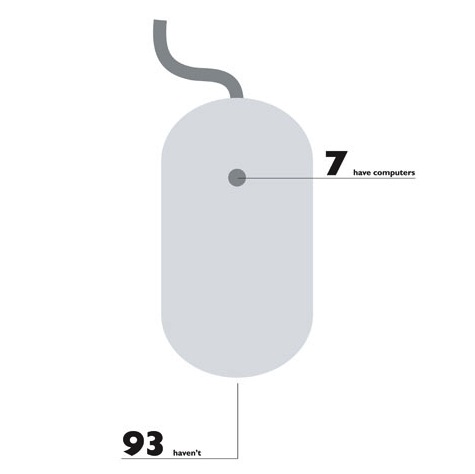The first digital divide has faded in schools but a second one is emerging, a study of the OECD, a rich-country think-tank, concludes.

The term digital divide came up in the 1990s when the internet made its way into public consciousness. It describes the gap between people with effective access to digital and information technology and those with very limited or no access at all. Digital divide in the first place was about the gap between those 7 people in our global village of 100 that have computers and the rest. The OECD study found that someone living in a rich country would probably be amongst those 7 people having access to computers. Regarding the students in particular, the picture is even brighter: in almost all OECD countries all students attend schools equipped with computers. 88% of computers at schools are connected to the Internet.
But the issue is far from closed. According to the study computer use can make a difference in educational performance if the student is duly equipped with the right set of competences, skills and attitudes. In their absence, no matter how intense the computer use is the expected benefits are going to be lost.
If policy making would be finished by putting computers and hardware into schools it would be like saying: Here is a book. Here is a paper. Here is a pen. Now you can read and write! No one would really argue, that this is the right approach to address illiteracy. Surprisingly and on the contrary, many policy makers still tend to use the paper-and-pen-approach in their decision making process on ICT use in schools. Therefore Michael Trucano of the World Bank recently assembled an insightful list of Worst practice in ICT use in education.
If you agree that you can’t fight illiteracy with a paper and a pen alone, than you would probably agree that fighting the first digital divide by putting computers in classrooms is only a precondition to fighting the real digital divide. The OECD study thus identified a “new” second form of digital divide between those who have the right competences and skills to benefit from computer use, and those who have not. For me and for many others this isn’t news, because there has always been a digital divide between my grandparents and me for instance, from the very beginning of the information age.
The OECD study may not be noteworthy in 2010 for its newness, but it could facilitate additional discussions and debates amongst policy makers and educators about digital literacy. And this is what really lies at the core of the educational challenge faced by many countries today.

